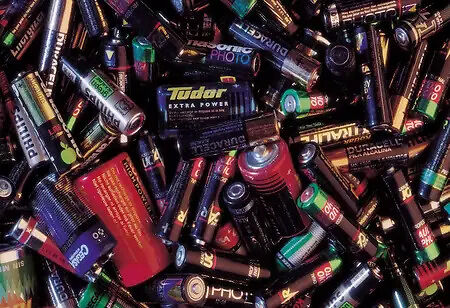
Water Activated Cellulose Batteries Helping in Reduction of E-Waste


India ranked third in renewable energy installations in 2021, after China and Russia. India has commissioned 15.4 gigawatts (GW) of renewable energy projects in 2021 across the country. To achieve its climate goals, India has announced a target of 500 GW of renewable energy by 2030 through sources such as solar photovoltaic (PV) energy, wind, and hydropower. At present, projects worth almost $197 billion are underway in India.
It's a bitter fact that environmental pollution continuously leads to new diseases every day, not to mention the ecological and environmental imbalance that could well lead to the endangerment of various living species in nature. The government has launched the Green India Mission (GIM), which strives to enhance carbon sinks in sustainably managed forests and other ecosystems, adaptation of vulnerable species or ecosystems to the changing climate, and adaptation of forest-dependent communities. The major goal of the project is to improve the quality of the forest cover in the upcoming years in millions of hectares of forest or non-forest lands and enhance ecosystem services, including biodiversity, carbon sequestration, and hydrological services. It also envisions providing services like fuel, fodder, and timber and non-timber forest produces and increased forest-based livelihood income for households in and around forests. Traditional Ecological Knowledge of communities, along with forestry science and state-of-the-art technology, would improve the Mission interventions.
Battery, more specifically electric vehicles, are considered the future of transportation worldwide. It would be a conflicting interest if the battery itself started contributing to the very problem. Keeping the environmental concerns in mind, the researchers at the Cellulose & Wood Materials Laboratory at the Swiss Federal Laboratories for Materials Science and Technology (Empa) are working on a water-activated disposable battery made of cellulose and other sustainable materials.
Water Activated Disposable Battery
Over the last few decades, the world saw the ever-increasing use of electronic devices, leading to electronic waste becoming the world's fastest growing waste stream. Elevating associated environmental risks requires advances at the material and device levels, for instance, by moving towards more environmentally friendly materials and improving the resource recovery rate. The steps undertaken are under progress, for example, with the development of green power supply technologies such as biodegradable photovoltaic, energy harvesters, and supercapacitors. However, there is still limited research on biodegradable primary batteries, a complementary and versatile energy source that can provide higher energy density and more stable operation.
Ink preparation and Characterization
The water-activated batteries are made up of inorganic materials such as magnesium (Mg), iron (Fe), tungsten (W), and molybdenum (Mo) that act as the density sources. For instance, we can use organic solvents to develop the batteries, for example, naturally occurring melanin and quinone in a biodegradable aqueous redox flow battery. Even though advances have been made in recent years, additive manufacturing of biodegradable batteries remains an important scientific challenge.
Cellulose, which is available in the form of paper made from bamboo, always has historical benefits. It has been used as a carrier substrate for information and knowledge transfer and has over the last decade and has a wide range of applications across biomedical diagnostics as information display and for energy storage. Cellulose Batteries and supercapacitors have also been developed using cellulose as a high surface area template for active redox materials or as a low-cost substrate by coating functional dispersions onto preformed paper or foam. Besides, several unique properties of cellulose, such as its intrinsic biodegradability, hygroscopic nature, and wicking behavior, have so far been poorly utilized.
The new paper battery is structured based on the same formula as standard batteries but packages them differently. It looks like a chemical battery, having a positively charged electrode called a cathode, a negatively charged electrode called an anode, and a conductive material called an electrolyte between two electrodes. The standard battery is made up of plastic and metal; in the new battery, the anode and cathode are inks printed onto the front and back of a piece of paper. The paper is infused with salt that dissolves when the paper is merged with water. The resulting saltwater solution acts as the electrolyte.
How does the Cellulose Battery Work?
When the paper gets into the salt solution, the solution releases charged ions throughout the paper. When the ions made contact with the zinc at the negative terminal, they released electrons, which are negatively charged. Connecting the wires to an electrical device completed the circuit, allowing the electrons to flow as current from the anode to the cathode via the device. At the cathode terminal, the electrons are discharged into the air. As the battery is activated by water, it could have an extremely long shelf life as long as it is kept dry.
Researchers proclaim that it is hard to predict a timeline for manufacturing such items at scale, but they believe these batteries could make their way into products within the next two to five years. The performance that they see on this device is sufficient for a lot of these applications already. It is mostly a matter of scaling up production and integrating the batteries into systems such as diagnostic tests and environmental sensors.
The battery's capacity is measured by the operating voltage with the current it produces. The chronopotentiogram obtained at a constant current of 100 μA at 30 minutes explains the peak power capability of the device, and it also describes the operating performance of the device.
After one hour, performance gradually decreases as the substrate dries. In the activation phase, the system should be provided with sufficient water to saturate the paper substrate, which represents approximately 100mg of water consisting of two drops of water dispensed directly on the battery’s wick using a pipette. By rehydrating the system, the battery gradually retains its performance and maintains a stable operating voltage of 0.5V for more than one hour. The battery's operating time is finally measured by the amount of water that paper can absorb by rehydration.